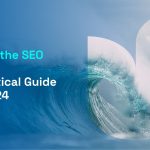How to create a content outline that makes ranking a breeze (+ blog post content outline)

Have you ever suffered from writer's block?
Maybe you know exactly what you want to write about, but it takes you days to write an article and you feel overwhelmed by all the pieces you need to make it good.
Or maybe you're just looking for a more efficient way to create quality content on a regular basis?
Creating a content outline is key to writing content that is not only engaging, but also ranks well.
In this post, we'll show you how to create an outline for a blog post and give you a blog post outline template that you can use for your future articles.
How to prepare and create your content overview
1. collect all readily available data and guidelines
The first thing you should do is gather all the information you already have that you need for your blog post. This includes any style and writing guidelines you need to follow, the ideal client profile or avatar of the blog you're creating content for, and the brief.
In the briefing, you will ideally find the target keyword for the article as well as other SEO instructions, such as which secondary keywords you should include, how many words the article may contain, and which internal links you should include. The brief should also give you an idea of the search intent of the article (is it informational, transactional, or commercial?) and tell you if there is a specific call to action you should include.
2. create a list of sources
Once you've gathered everything, it's time to make a list of the sources you'll use to research your blog post. If you're writing an article with the goal of ranking well in Google - and I hope you are - you shouldn't use just any relevant source.
You should find the articles that already rank on the first page of Google for your main keyword, and filter out those that are most similar to the article you want to write. This means that when you write an informational article, you exclude the e-commerce product page that is already ranking, but keep the other informational pages.
A word of warning: If you're writing content from a country that's different from your target audience (the customer), you'll want to make sure you either use a VPN when googling, or use your main keyword in an SEO tool like Ahrefs look up and in this way check the 10 best placed items for the right location.
3. research
Once you have your sources, read through them all to find similar headlines, recurring themes, and issues being addressed. The goal is to find out what the articles you'll be competing with for a first-page spot cover, so you can make sure you cover it.
Don't just make mental notes as you do this. Write down ideas for headlines and other things you definitely want to mention, as these will be the starting point for the outline of your blog post.
4. create outline of the article
We usually start creating an outline in Google Docs as we research, but you can also take notes first and then divide everything into different article sections. Create headings to structure your article, then include information and ideas in the different sections so you don't have to start over later.
If you are an industry expert, you can enrich your notes and add to the outline by incorporating your own expertise. However, if you are writing for an industry or on a topic that is new to you, you may need to do additional research to gain a proper understanding of the concepts you need to cover.
5. add keywords, data and other material to relevant headlines
You should have a solid outline by now, but there's more you can do. Go back to the material you collected in Step 1 and think about how you can incorporate it into your outline.
- Are there keywords you can add to a headline or section?
- Are there internal links that should appear in a specific part of the blog post?
- Is there a product feature or case study you could highlight somewhere?
6. start writing!
Once you have completed all of the above steps, "all" that remains is to turn your loose notes, ideas, and supporting data into engaging text. You'll probably need to do some additional research as you write to enrich your text with images, statistics, and examples, but if you follow the steps above, you'll be in the best possible position to get started.
Blog Post Outline Template
H1 THIS IS YOUR ARTICLE TITLE
It should contain your main keyword. Ideally, this is followed by an introduction that includes your main keyword in the first 100 words. The introduction should also introduce the topic of the article and entice the reader to read on.
H2 THIS IS YOUR FIRST MAIN OVERSUBSCRIPTION
It introduces an important section of your article. Anything that addresses a specific topic or issue in your article should get its own headline or subheadline.
H3 Headline
If your sections are quite long, you should divide them into different subsections to make them clearer and easier to read. These could be presented as a numbered list, as different steps in a process, or simply as subheadings.
H3 Headline
…
H3 Headline
…
H2 THIS IS YOUR SECOND MAIN OVERSUBSCRIPTION
The longer your article is, the more headings and subheadings you will have.
H2 OVERWRITING
…
H2 OVERWRITING
…
H2 CONCLUSION
Each blog post should end with a conclusion that gets its own H2 heading. This makes it clear to the reader that the previous section of the post has ended and we are now concluding.
The conclusion should briefly summarize the content of the paper, share key findings, and include a next step for the reader. In many cases, this next step will be a CTA to sign up for your email list, purchase your product, or contact you.
Prepare, sketch, get started!
Creating a solid outline will save you hours of research and make the writing process easier by giving you a structure to stick to. It is much less daunting to write a paper with a solid outline than with a blank page. If you follow the steps above, writer's block will be a thing of the past. However, it is important that you have all the elements you need to get started. Even if you are a good writer, your post will not rank well if you do not have a proper keyword plan presented in a clear content brief.
At Dartera, we help you figure out what to write about and translate your content strategy into easy-to-understand briefings. That way, you know exactly what you need to write to rank. Contact us to discuss how we can help you optimize your content.








